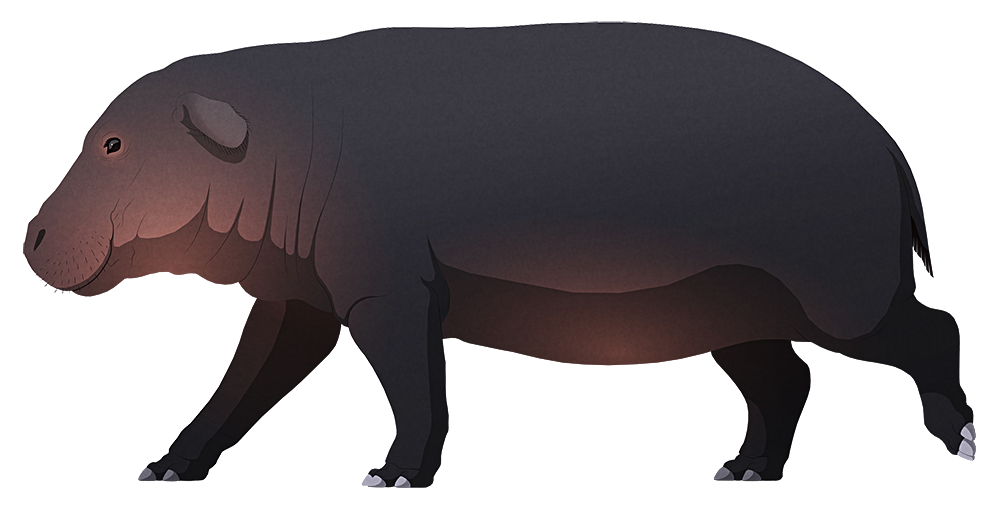Much like elephants, hippos have frequently made their way onto islands and developed dwarfed forms. These mini-hippos are mostly known from the Mediterranean, but further south they also occurred on Madagascar.
Hippopotamus madagascariensis (also sometimes called Hexaprotodon madagascariensis or Choeropsis madagascariensis; its exact classification is uncertain) was similar in size and appearance to the modern West African pygmy hippo – which it might have been closely related to, or may have just ended up resembling through parallel evolution.
Standing under 1m tall at the shoulder (3′3″) and measuring about 1.8m long (5′11″) it lived in the forested highlands and was much more terrestrial than its larger cousins. Its eyes were further down on the sides of its head, and it was better adapted for walking and running around on land, with proportionally longer legs and a more digitigrade posture.
It also had an unusually small brain for its size – about 30% smaller than expected – which may have been an energy-saving adaptation.
Two other species of dwarf hippo have been identified on Madagascar – the similarly-sized but more aquatic Hippopotamus lemerlei in the west of the island, and the larger and poorly-known Hippopotamus laloumena in the east. It’s not clear when exactly the ancestors of these various hippos first arrived on the island, and they may even represent three independent colonization events.
The last known subfossils date to about 1000 years ago, but surprisingly accurate accounts of similar creatures in Malagasy folklore raise the possibility that small isolated populations of these hippos may have survived into more recent times. One of the most intriguing examples is the kilopilopitsofy, described as having large floppy ears and supposedly being sighted as recently as the 1970s.


